
Do-it-yourself car stickers? No problem with our advice
Content
Car wrapping is a popular alternative to painting. Opportunities range from bright and sporty designs to promotional texts. With proper preparation, you can apply the foil yourself. We'll show you what it takes and give you valuable tips on applying foil to your car.
Why wrap your car?

Attractive body design is in demand not only in sports cars or in the field of tuning. Many car enthusiasts like to improve the appearance of their car, which is traditionally done with a solid color paint. Wrapping a car, or wrapping a body with a film, is an alternative to painting a car with a lot of advantages. . Application and removal is much easier than the time-consuming and minute task of painting a car. In addition, foil allows you to create exciting colors, patterns and motifs. This is especially useful if you want to turn your car into an advertising item for your company.
Wrapping a car with your own hands or in the garage?

Applying foil is less labor intensive than painting. However, this is a difficult task requiring the required precision..
It is only through careful work with the foil cut to size that an exterior upgrade of the vehicle is possible. Particularly with full pasting, the necessary skill and work by two is recommended.

When wrapping a car, you must distinguish between printing a plastic film and sticking it on a car. . For the production of wrapping film, professional local printers and those found on the Internet are the right points of contact. They guarantee an attractive performance of your printed motifs so that they can be applied to the vehicle in the correct resolution and the correct shade. Once the foil is printed and delivered, you need to consider if you are qualified to apply it. Creases and tears cannot be removed without visible traces. In case of doubt, it is better to contact a car service.
Full and partial wrapping of the car

Do-it-yourself car wrapping depends on the size of the foil and the chosen motif . The highest discipline is full wrapping, for example, covering the entire body with a film. This is mainly done as an alternative to applying a new coat of paint. The foil sheets are relatively large and therefore must be applied with great precision. A visit to the garage is the best choice in this case.
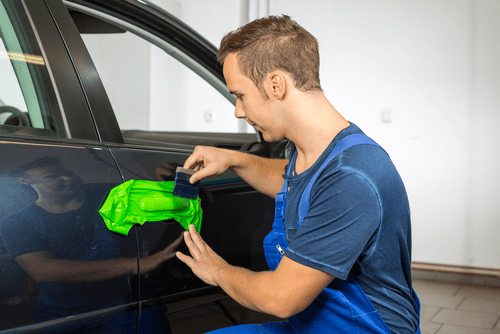
Partial wrapping of the car is different . Here, the foil is applied only to individual body parts, such as side doors or windows. Partial packaging is popular with companies to apply an advertising slogan, company logo or phone number. Individual sheets of foil are small and easy for DIYers to handle. It is required to work cleanly and accurately, but this is possible with a little skill.
Basic car wrapping tips
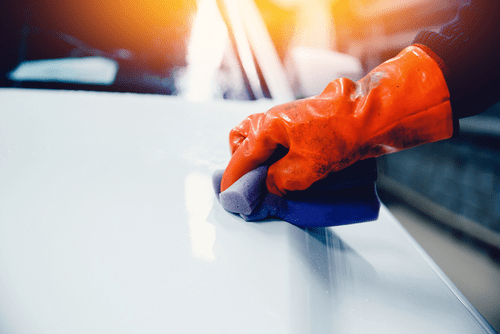
A clean film application requires the best possible conditions, starting with the surface, which must be free of dust, dirt and roughness.
Large cracks and damage to the paintwork must be smoothed out before applying the film to ensure that the surface is even and free of wrinkles.

About creases: even with very careful application of large sheets of foil, the formation of small air bubbles cannot be avoided. Even in the garage, you should expect minimal degradation of your foil motif. With experience and the right tools, professionals can minimize the risk of blisters.
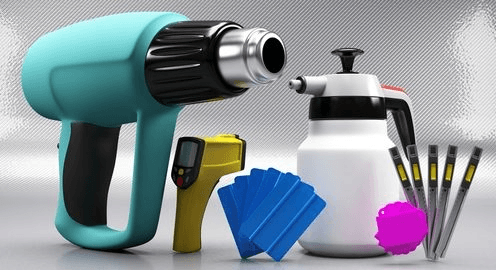
Ambient temperature is important for optimum adhesion to the surface. Experts recommend an outdoor temperature of 20 ˚C or slightly higher. Under other circumstances, the foil shrinks or expands in the event of cold or heat. The final result will be noticeable only after a couple of hours or days after application. In extreme cases, the foil has torn or folded due to expansion.

The most important information in the review
 What you need? What you need?– Adhesive film with high quality printing – Plastic squeegee for smoothing – Surface cleaner – At least two people (for full wrapping) – Release agent (to be removed at a later stage) |
 Vehicle requirements Vehicle requirements– clean surface – The surface is as smooth as possible – No corrosion or paint damage |
 How expensive is it? How expensive is it?– €100 to €200 (£90-175) for a partial car wrap – €300-1 (£000-260) for a full car wrap depending on the quality – several hundred pounds sterling (professional car wrapping) |
 Do-it-yourself car wrapping - advantages Do-it-yourself car wrapping - advantages– Significant cost advantage – Individual arrangement of partial pasting |
 Do-it-yourself car wrapping - disadvantages Do-it-yourself car wrapping - disadvantages– Extensive and painstaking work – More difficulties in case of bubbles |
Do-it-yourself car wrapping - instructions and tips
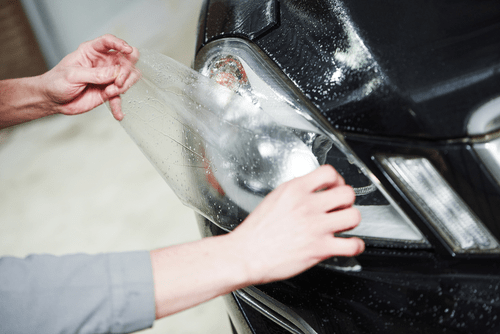
Start by ordering synthetic foil with your printed motifs. Especially in the case of full wrapping, take exact measurements, which are also indicated in the vehicle owner's manual or can be requested from the vehicle manufacturer. Ultimately, it won't look good unless one or more centimeters are covered with foil.
When the film is installed, thoroughly clean the bodywork and make sure the surface is dry. If you plan to remove the film after a certain time, start by applying a special release agent from your specialist dealer. This makes removal much easier. Once the release agent is dry, you can start applying the foil.
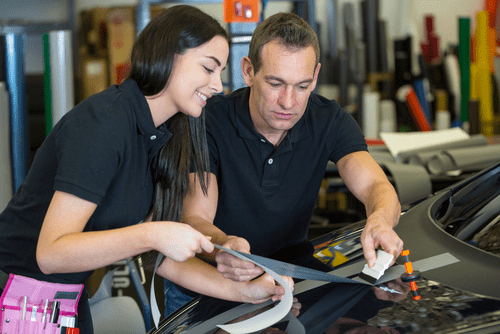
Apply a protective layer in the corner and place it on the body in the desired location. Ideally, one person holds the foil in place while another peels off the protective layer and sticks the adhesive side tightly and smoothly to the surface. The plastic scraper helps smooth out the foil on large surfaces and is especially indispensable for full packaging.
If the foil is applied correctly, you will notice air bubbles that will disappear after a few days. If this does not happen, pierce them with a needle and smooth them out.